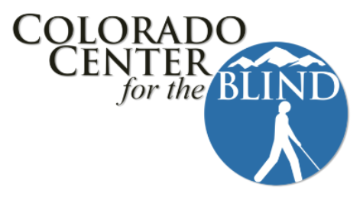Students at @cocenter4blind got a chance to experience science in all its disgusting glory.
By Ramsey Scott
November 18, 2014
Columbine Courier
“Yucks!” blended with yucks as the students probed the stomach contents of the dogfish sharks they were dissecting
“I found a claw,” said one student, as he waved miniature pincers in the air.
“I found a fish,” another student said as she held high a half-digested fish body.
A biology class cutting open a formaldehyde-soaked animal isn’t necessarily a unique event. Yet for most of the class at the Colorado Center for the Blind in Littleton on Nov. 14, it was their first chance to experience what most students take for granted.
“This is my first time doing anything like this. It’s really interesting and a little nasty,” said Nick Crowell, 17, a student at the Colorado Springs-based Colorado School for the Deaf and Blind who came to Littleton for the class. “It’s interesting because we get to see how similar humans are to some animals. And they’re letting us use sharp instruments, and we don’t really get to do that.”
Arapahoe Community College biology professor Terry Harrison has led the dissection class for the school since 2005. He said teaching students with varying levels of vision impairment has improved his teaching methods at ACC.
“It’s very rewarding to watch the experience they get from doing this dissection. For most of them, they’ve haven’t done anything like this before, so they get really excited about it,” Harrison said. “They don’t have any disability other than limited sight. So they have the ability to use scissors, scalpels just like everyone else.”
The students also had the chance to get grossed out. Several students squealed as they felt the shark’s brain or liver in their hands.
“The stomach was the grossest thing to feel. We got to feel what food was in it,” said Johnnie Jean Duran, 14, a student at Alameda International High School. “This has been great, being able to feel and see an animal like this. I never thought I’d know what it looked and felt like.”
Ana Martinez, a 17-year-old student at Verizon High School, shared her fellow classmates’ amazement at the experience. Martinez recently moved here from Mexico and said that in her home country, such opportunities aren’t available.
“I never thought I’d be able to do something like this. In my country, the expectations of blind people are low,” Martinez said. “To be able to do something like this — this is so interesting and new. Being able to feel a brain; it feels like a sponge.”
Julie Deden, executive director of the Colorado Center for the Blind, said that, growing up with a vision impairment, she never had an opportunity to experience science like other students.
“I grew up in the Littleton Public School system as a blind student, and they worked to integrate me into classes. But there were particular classes where they didn’t know how to integrate a blind person. It’s not anyone’s fault,” Deden said. “I can’t put into words what being here means to me. They get to experience this. They get back from this, and they’re excited. They realize that they can do it. They can have a career in science or whatever else they want to pursue.”
(This story originated with the Columbine Courier’s web page at www.columbinecourier.com where there are photos as well.)
